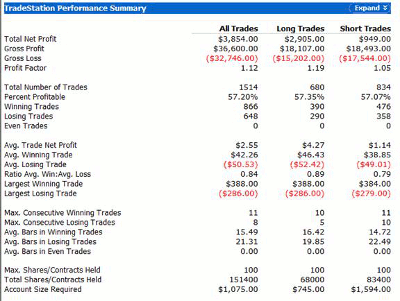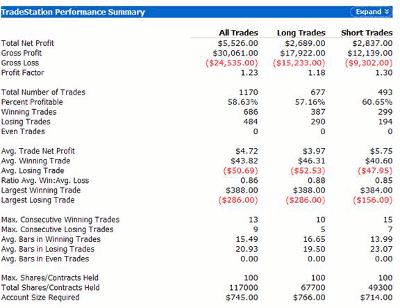History provides some telling proof that sometimes the smallest adjustments can produce outsized results, as evidenced by this gap trading example.
In the timeless words of Sir Winston Churchill, “Those who fail to learn from history are doomed to repeat it."
Though Churchill was not speaking of the markets, the concept is certainly applicable. In fact, the easiest way to make money trading the markets is to avoid those set-ups that have been historically unprofitable.
Many folks obsess over trying to trade every winning set-up. I do not. I am a gap fader. When the historical probabilities are favorable, I will short “up” gaps and buy “down” gaps. Since more than 70% of all opening gaps have filled the same day historically in the US indices, I do not need to catch every winner to be successful.
In fact, I’ve had my best success focusing on simply trying to avoid the majority of the losing set-ups. Let’s take a look at a real market example.
Had you hypothetically faded every tradable opening gap since 2004 in the S&P 500 ETF (SPY), using a reasonably sized stop (e.g. 30% of the five-day Average True Range (ATR)) to accommodate post-open volatility, you would not have made much in profits:
Now let’s look at these results segmented by day of the week—one of the easiest filters to incorporate into your trading plan:
As you can see, fading “up” gaps in the SPY on Mondays and Wednesdays since 2004 has been a money-losing scenario.
So, what if you simply excluded fading “up” gaps on these two days? Here are the historical results:
The total number of trades decreased by 23%, while the total net profits increased by a whopping 43%! This is pretty astounding when you consider the simplicity of the concept. And though these results are still not compelling and worthy of trading, in my opinion, the dramatic improvement in profitability illuminates the value of avoiding the weakest set-ups.
A word of caution: Taking this concept too far can result in “curve-fitting,” a risk when creating a strategy based on historical data. However, excluding historical scenarios that have occurred frequently and been significant money losers seems prudent and has worked well for me personally.
If identifying the best and worst scenarios for trading the gap in the S&P 500 or one of its component stocks is of interest to you, then help yourself to my complimentary historical research study on opening gaps in the S&P 500:
Download the full SPY gap study here.
Whether you are a gap trader or swing trader, this information can help you. If nothing else, it should help you think like Winston Churchill and stay on the “right side of history.”
By Scott Andrews
Scott Andrews, a West Point graduate and former CEO of a public company, is founder and president of MasterTheGap.com. He is offering a complimentary historical research study on opening gaps in the S&P 500. Download your SPY gap study here.
























